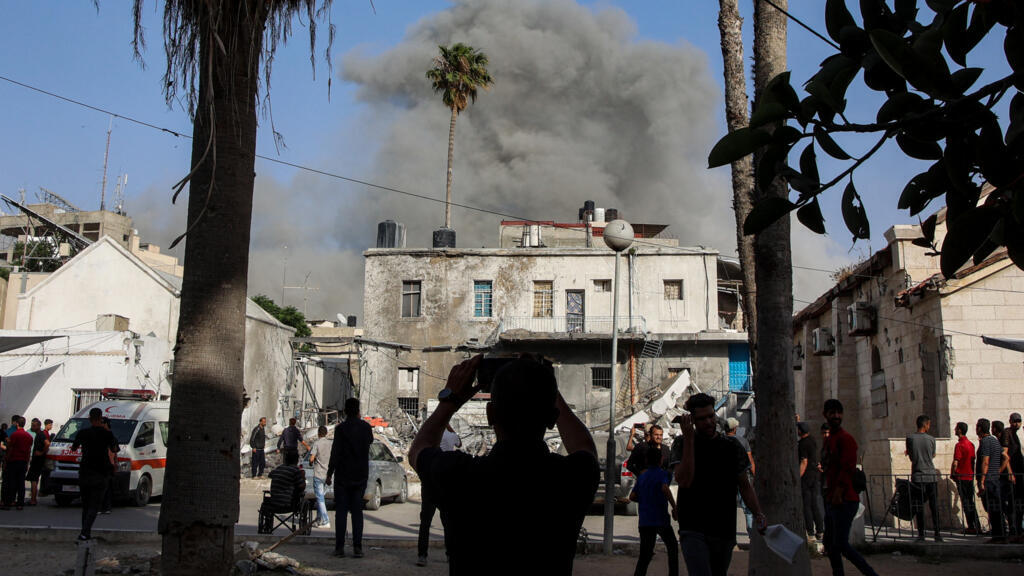“The state’s current policy on the issue of hijab is not to follow strict rules on the issue of hijab,” conservative Iranian politician Ali Motahari told the prosecutor Iranian politician Ali Motahari last week.
He said that the police should intervene only in the situation of gross violation.
“You have to know that even during Shah, before the revolution of 1979, women were arrested if they did not publicly wear clothes,” he said. Wearing hijab, or headcharf is mandatory in Iran.
However, before the death of Jina Mahsa Amini in police custody in September 2022, before the nationwide protests, the motivators were one of the conservative politicians who repeatedly asked for a crackdown to distract from a strict dress.
In 2014, he asked, “Why are women allowed to wear trousers under their coat?” He called for more strict action against women belonging to the authorities.
‘A changed country’
“What we have achieved in the last three years cannot be overcome by the state,” a sex researcher and journalist from Tehran told DW. He told DW not to publish his name as the officers regularly reprimand him for his stand, and he also receives the risk of death from anonymous callers.
She is one of the women who encourages not only to publicly wear a headscarf, but also to make decisions for those subjects whether they want.
She says, “They can no longer force us to follow their rules and every time we get out of the house, we automatically wear a headcharf.”
So is it emphasized that Iran has changed after the death of Jeena Mahsa Amini. For example, on May 12, the coffin of Shiva Aristaui for Iranian writer and poet, which was done by women without compulsory hijab. Traditionally, carrying the coffin has long been a case for men according to religious and social norms. However, since “women, life, freedom” movement, more and more women attend the funeral without compulsory hijab and carry the coffins of their loved ones.
Nevertheless, many women deliberately stay away from international media and attract public attention to continue on their way without additional oppression. Any exchange with international media can be considered “promoting against the system,” “a hostile government cooperation” or prosecuted as “orders from abroad”.
Nilofer Hamedy, Award winning journalist, is a recent example of the state’s rift. His reporting on the death of Jeena Mahsa Amini in 2022 brought her international fame.
In other pieces, he published a picture of Amini’s grieving parents. It quickly went viral on social media and became a symbol of nationwide protests, which became the biggest protest movement in Iran since the Islamic revolution in 1979.
Hamhedi was arrested on charges of “a collaboration with an enemy government”, “an enemy’s cooperation with the system” among other allegations. He was sent for a total of 13 years in jail. However, after 17 months, he was released on bail in January 2024.
On May 11, 2.800 days after the change of the country, an article under his name appeared in the country’s leading Persian newspaper once again. ShawlNeelofer Hamdey is again allowed to work as a journalist in Iran.
‘There is a lack of power to prevent changes in the state’
Does it indicate that the state has captured for women? “No,” women rights activist and religiousist Sedigheh Vasmagi told DW.
“The political system has not accepted the resistance shown by women,” he said. “The state does not have the power to prevent or reversed this change.”
Vasmagi, who joined the protesters against the compulsory headscarf rules, no longer wear headscarf in public.
In April 2023, Vasmagi wrote an open letter to Khameni, in which he criticized his decree on the hijab requirement and emphasized that the Quran does not determine the discovery for obligation.
In March 2024, he was arrested for “publicity against the system” and “a public appearance with the Sharia-influential hijab”. Due to his health problem, he was sent to the slogan.
Nevertheless, he can be arrested again on Annie time. But he has no food. He said, “The state in Iran is facing a large -scale domestic and foreign policy problems and is currently not in a position to deal with women, especially adolescents and young women from all over the country, who no longer want to wear headscarws,” she told DW.
“However, any measures that seem effective will be reviewed and an attempt will be made to implement,” Vasmagi continued, publicly mentioned the debate on the onset of a controversial Loto Monitor in Iran. The law offers a series of punitive measures for women that publicly refuse to wear the necessary hijab.
“The political system can no longer return the time,” said Vasmagi.
This article was the original published in German.


